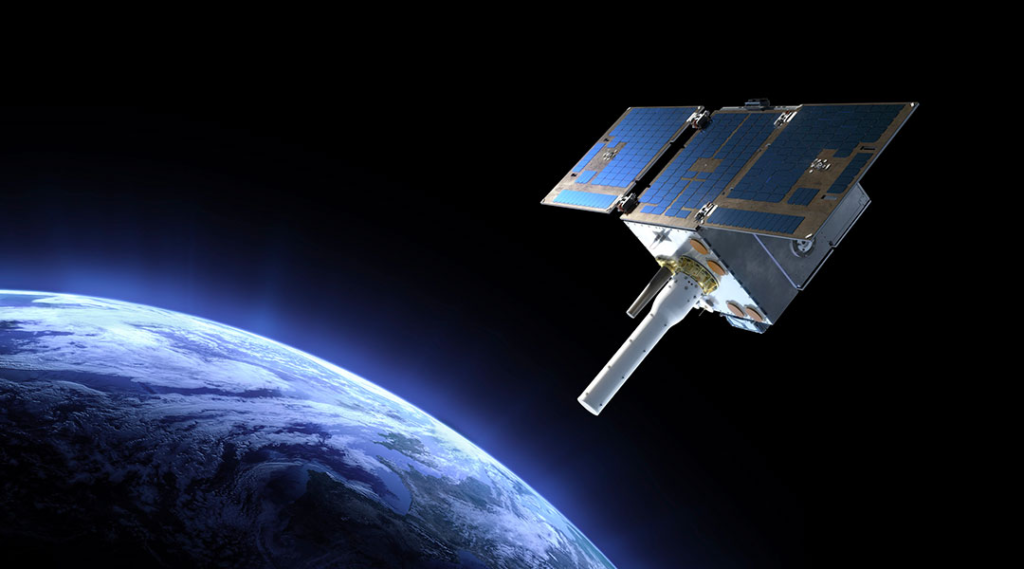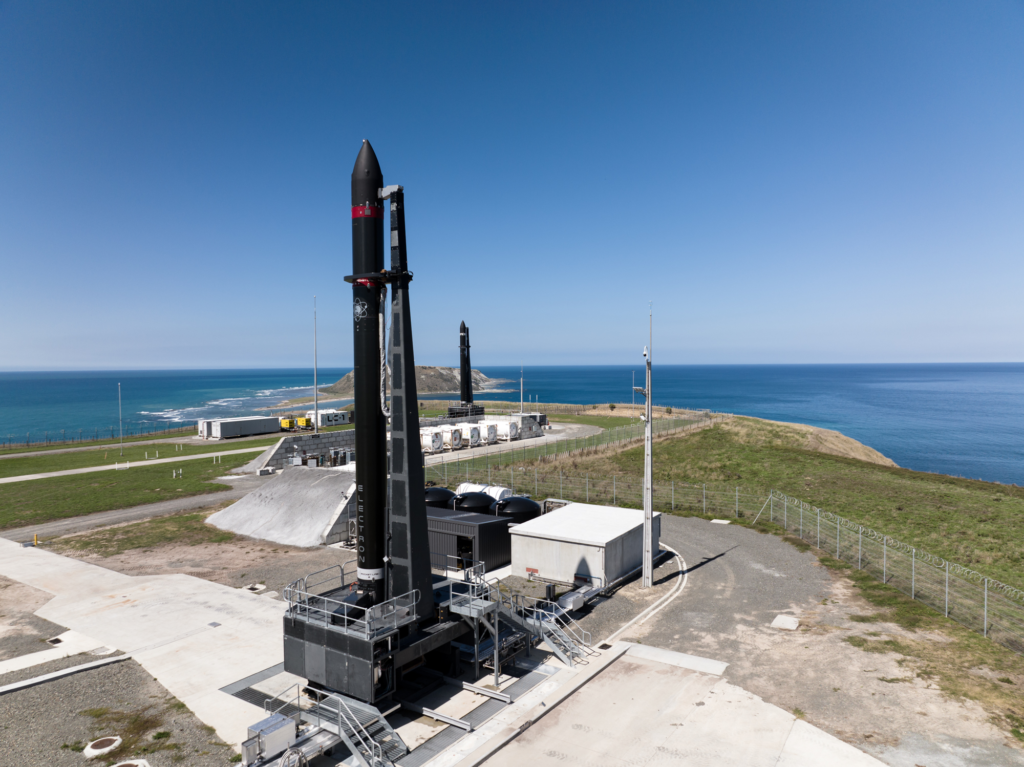
Rocket Lab’s Next Mission Is Just Over A Week Away From Pad B
Rocket Lab has been putting the petal to the metal in terms of progress and different missions. The company’s last launch marked many different milestones and was only 9 days ago on September 15th. Not to mention all the new information and projects announced during the Investor Day presentation. This being said, Rocket Lab is already preparing for its next launch scheduled only 11 days from now on October 5th.
The mission named “It Argos Up From Here” is set to be the company’s 31st Electron launch and hopefully another successful mission. Here Electron will launch the General Atomics Electromagnetic Systems designed and manufactured satellite carrying the Argos-4 Advanced Data Collection System (A-DCS) hosted payload. This satellite is very unique and expected to provide a host of different benefits once in orbit.
This includes providing a better understanding of Earth’s physical and biological environment, such as its weather and climate, biodiversity, ecosystems, and even the ability to track different marine mammals. All of which relies on Rocket Lab and the Electron launch vehicle. Here I will go more in-depth into this upcoming mission, Rocket Lab’s impressive launch cadence, what to expect in the coming days, and more.
Launch Cadence & Pad B

Launching from Pad B at Launch Complex 1 on New Zealand’s Mahia Peninsula, Rocket Lab will deliver General Atomics’ GAzelle satellite carrying Argos-4 to orbit. Just a few days ago on the 19th Rocket Lab tweeted saying, “One right after the other! Next up on the Pad B at LC1 is our 31st Electron mission called “It Argos Up From Here.” Its been very clear over the past few years that Rocket Lab has been trying to increase launch cadence and continue sending Electron and different payloads to orbit. This was further supported by some additional information provided during the company’s Investor Day presentation. Here Rocket Lab talked about increasing Electron’s schedule and compared the small-lift launch vehicle to other small sat launchers such as Astra and Virgin Orbit. They highlighted the fastest turnaround between successful launches with only 15 days as the current best.
One of the biggest contributing factors to this recent ramp up in launches has to do with the opening of Pad B at launch complex 1. Back in February of this year, Rocket Lab announced the completion of its second orbital launch pad at LC-1. With two operational pads within the same launch complex, Rocket Lab doubled the launch capacity of its Electron launch vehicle. Specifically, with two launch pads and private range assets at Launch Complex 1, concurrent launch campaigns are now possible from the site. This enables resilient access to space by accommodating tailored customer requirements or late changes to a spacecraft while keeping Rocket Lab’s manifest on schedule. Operating two pads also eliminates pad recycle time, ensuring a launch pad is always available for a rapid-response mission. Launching from a private launch complex, Rocket Lab is also able to avoid the lofty range fees and overheads typically associated with shared launch sites, resulting in a cost-effective launch service for satellite operators.
This doesn’t even include Rocket Lab’s Launch Complex 2 in Virginia. While this site has had a few complications stalling consistent use over the past couple of years, it’s expected to be operational not long from now in addition to work on Neutron’s facility near by. In the recent Investor Day presentation, Peter Beck pointed out that this launch complex is scheduled for a launch this December, and another in January. This suggests that the launch complex will be consistently supporting Electron launches very soon. In a separate quote, CEO of Rocket Lab Peter Beck said, “A reliable launch vehicle is only one part of the puzzle to unlocking space access – operating multiple launch sites so we can launch when and where our customers need to is another crucial factor. We are proud to be delivering responsive space access for our customers, making back-to-back missions possible within hours or days, not weeks or months. Even with just one pad at Launch Complex 1, Electron quickly became the second most-frequently launched U.S. rocket every year. Now, with two pads at Launch Complex 1 and a third in Virginia, imagine what three pads across two continents can do for schedule control, flexibility, and rapid response for satellite operators globally.” While this pad was completed just earlier this year, we have already seen its significant impact on Rocket Lab’s launch cadence.
After the completion of Pad B, Rocket Lab’s Vice President of Launch, Shaun D’Mello, said: “With Pad B we’ve kept things efficient. Its systems and layout replicates Pad A and shares much of Pad A’s infrastructure including the Electron vehicle integration hangar, runway to the pad, and our own range control facility. With that, we’ve been able to double our operational capacity – all on a concrete area smaller than the average tennis court. I’m hugely proud of what the team has achieved: building and bringing a second pad online, all while continuing to service and operate Pad A for our Electron launches to date, and in the middle of a global pandemic no less.” As an FAA-licensed spaceport, Launch Complex 1 is capable of supporting up to 120 launch opportunities every year. From the site it is possible to reach orbital inclinations from sun-synchronous through to 30 degrees, enabling a wide spectrum of inclinations to service the majority of the satellite industry’s missions to low Earth orbit.
Upcoming Mission

Now that we know more about how Rocket Lab is increasing launch cadence, we can take a closer look at the company’s next mission launching from Pad B in 11 days. The “It Argos Up From Here” mission will launch the GA-EMS designed and manufactured satellite carrying the A-DCS hosted payload. The Argos-4 payload is part of the international Argos program that collects data from thousands of sensors and transmitters located around the world. Argos data is collected and distributed for use in numerous applications, and helps provide a better understanding of Earth’s physical and biological environment, including its weather and climate, biodiversity and ecosystems, as well as assist with maritime security, offshore pollution, and humanitarian assistance. Information gathered via the Argos system also enables industries to comply with environmental protection regulations. Argos has most famously been used to track wildlife, particularly marine mammals and sea turtles since the 1980s. There are currently 22,000 active transmitters around the world that the Argos system is monitoring, with almost 7,800 tracking wildlife.
In regards to this mission, Peter Beck mentioned, “The Argos international satellite system has been delivering crucial environmental data from space for more than 40 years, so we’re very proud to support this important legacy and ensure its resilience by providing reliable, dedicated launch services. We’re delighted to be working with the team at General Atomics to make this important mission possible. The mission ultimately serves to better monitor and protect the environment on Earth, we’ll be doing our part to ensure environmental sustainability in space by once again performing an orbit lowering burn with the Kick Stage after payload deployment to rapidly accelerate the Kick Stage’s de-orbit time, avoiding creating long term space debris.”
The delivery of the GAzelle satellite was contracted to General Atomics by the United States Space Force’s Space and Missile Systems Center under a Hosted Payload Solutions mission delivery order for the Argos Advanced Data Collection System, on behalf of the National Oceanic and Atmospheric Administration (NOAA). The Argos-4 instrument onboard spacecraft was provided by France’s National Centre for Space Studies. The GAzelle satellite will become part of the Argos constellation supported by the NOAA Cooperative Data and Rescue Services Program and is the only payload aboard Electron for this mission. Argos is an international program that collects data from some 18,000 transmitters operating around the globe, serving a host of applications including tracking of buoys, fishing vessels and wildlife; collection of environmental data such as ocean temperature profiles, river levels and animal heart rates; and observation of ocean parameters such as currents, temperature and color.
“We are looking forward to completing the final milestones toward a launch countdown, as we grow closer to delivering NOAA’s latest environmental data collection and monitoring capabilities on orbit,” said Scott Forney, president of GA-EMS. “Rocket Lab’s ability to provide us with a dedicated launch solution, and their demonstrated success in deploying small satellites into targeted low Earth orbit destinations complements GA-EMS’ commitment to offering efficient, reliable solutions that meet our customer’s unique mission requirements.”
Conclusion
Rocket Lab is on a mission to become one of the biggest companies within the space industry. One way they are trying to improve is by significantly increasing Electron’s launch cadence. A great example is the upcoming launch from Pad B scheduled right after the company’s milestone launch. We will have to wait and see how it progresses and the impact it has on the space industry.
